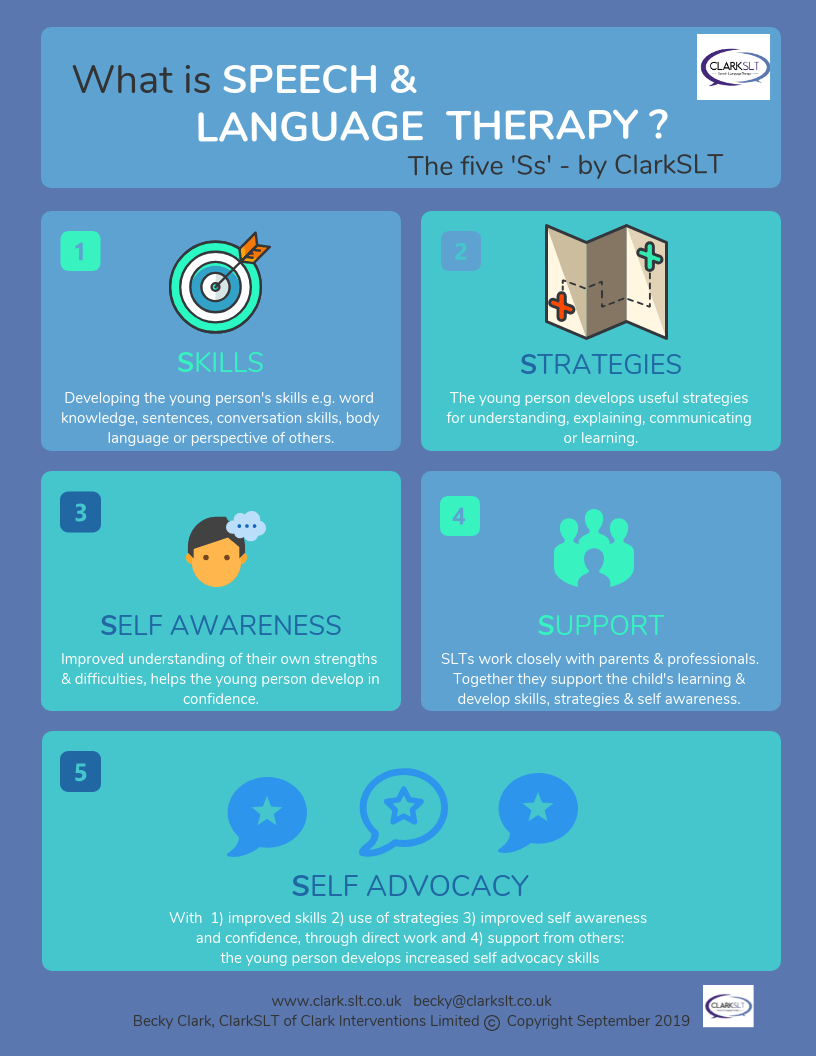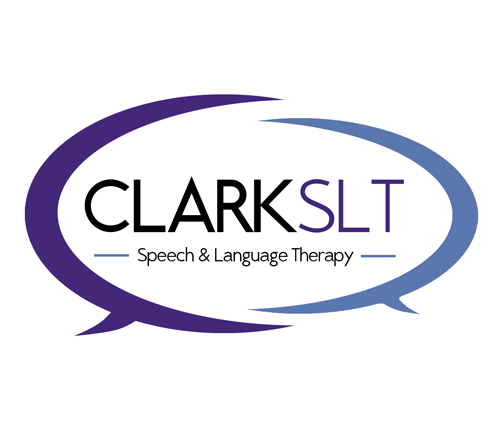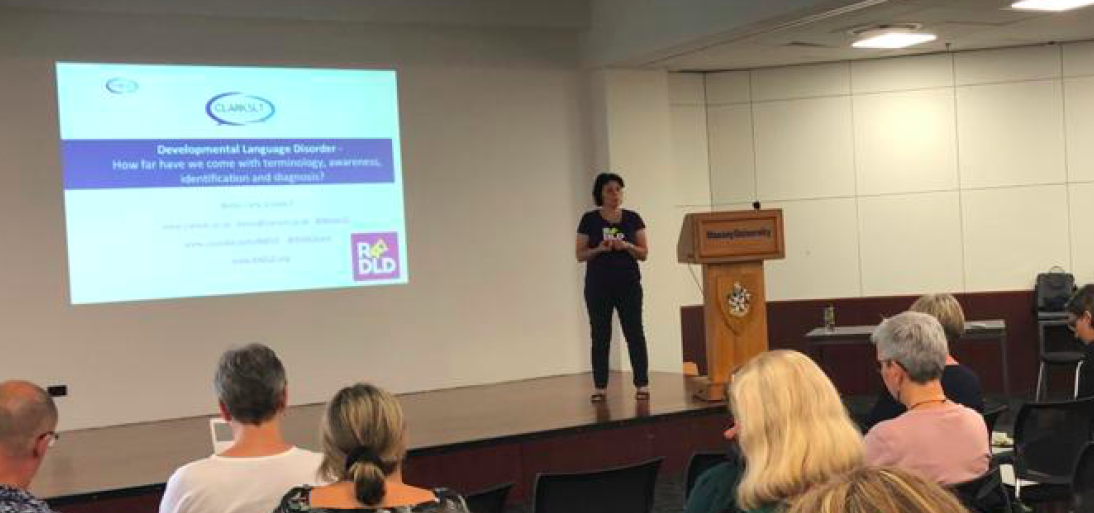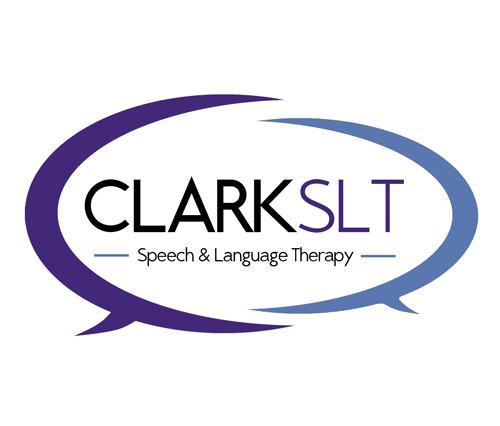How can speech & language therapy support your child?
'The five Ss'

Speech and Language Therapy can be a mystery to parents when it is first suggested for their child. The referral may be due to potential Developmental Language Disorder, social communication difficulties, or another type of speech, language and communication need. P
arents often ask "Can you help?" or "What will therapy involve?". We also experience young people themselves questioning "..but how can you help me with that?".
Our 'Five Ss' graphic (below) demonstrates the ways we may intervene. SLTs work with professionals and parents to '
Support
' the child using shared approaches, and intervention may focus on
' Skills
' e.g. learning to understand and use specific new words. SLTs may work on
' Strategies
' e.g. developing individual strategies for learning words, and on
' Self
Awareness
' e.g. the child learns that specific areas of communication are difficult for them, but that they also have many strengths.
See an example of this from Michael, who explains how SLT helped him in 'Speech & Language Therapy: Helping Michael'
a film I created with RADLD ( www.youtube.com/RADLD
).
We aim for the young person to have improved skills, to build a set of strategies, and to be confident in their own strengths and difficulties. Our view is that ultimately these elements combine to achieve improved
' Self
Advocacy
'. This may have a range of important outcomes, from developing the confidence and skills to ask for clarification in the classroom - to having the ability to explain to an employer what adaptations they need in the work place.
In this clip 'Alicia talks about DLD'
one of our students
describes how SLT has helped her use strategies to work around difficulties, how her confidence in herself has developed and about the difference this makes.
I believe it's important that intervention offers this combination of support.
Children, young people and adults who have communication difficulties need to experience understanding from others, need to develop their own 'toolkit' of strategies, and need to have the confidence and ability to express their needs. Speech and Language Therapists are here to help.



